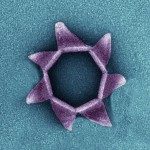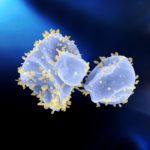Lien vers Pubmed [PMID] – 22420850
Adv. Virus Res. 2012;82:33-62
Ever since their discovery, archaeal viruses have fascinated biologists with their unusual virion morphotypes and their ability to thrive in extreme environments. Attempts to understand the biology of these viruses through genome sequence analysis were not efficient. Genomes of archaeoviruses proved to be terra incognita with only a few genes with predictable functions but uncertain provenance. In order to facilitate functional characterization of archaeal virus proteins, several research groups undertook a structural genomics approach. This chapter summarizes the outcome of these efforts. High-resolution structures of 30 proteins encoded by archaeal viruses have been solved so far. Some of these proteins possess new structural folds, whereas others display previously known topologies, albeit without detectable sequence similarity to their structural homologues. Structures of the major capsid proteins have illuminated intriguing evolutionary connections between viruses infecting hosts from different domains of life and also revealed new structural folds not yet observed in currently known bacterial and eukaryotic viruses. Structural studies, discussed here, have advanced our understanding of the archaeal virosphere and provided precious information on different aspects of biology of archaeal viruses and evolution of viruses in general.




